Welcome to our December Japan Rail Enthusiast Updates
Firstly, we would like to wish all our clients, followers and friends our seasonal greetings and a healthy and prosperous 2025. We hope to see some of you in Japan next year!
As you may know, Christmas is not traditionally celebrated as a holiday in Japan (but rest assured, we are accustomed to it). However, the New Year is a significant and extended holiday for many, typically lasting 3 to 4 days from December 31st to January 3rd. This year, we are fortunate to have a weekend added to the festivities! Please note that TS Japan Rail will be closed for the holiday from January 1st to 3rd.
Note about New Year Holidays in Japan
If you find yourself in Japan during the Christmas and New Year holidays, it’s important to note the following:
- Christmas Day is treated as a regular working day, businesses and schools will be open as normal, and all transportation will be operating normal services on 24th, 25th and 26th December.
- 1st January is a public holiday, 31st December, 2nd & 3rd January are also holidays (be careful many calendars do not show them as holidays)
- Many businesses will be closed from 28th December (Saturday) until 5th January (reopen Monday 6th January 2025). This means that long distance trains, buses and airlines will be busy from the 28th~31st December (outbound from big cities) with the return starting on 2nd January. It is very advisable to book seats in advance. On many routes extra shinkansen and limited Express train services will operate (as well as extra long distance buses and flights).
- Most shops and restaurants will close early on the 31st December, and will be closed on 1st January. Shops and restaurants will start to reopen from the 2nd January, but it will be 4th or 5th January before most are open. Exceptions are convenience stores, some supermarkets and some shops and restaurants around busy areas such as shrines and temples.
- Check on the opening times of other tourist facilities.
Most local public transport will operate to holiday schedules but with extra trains on some routes to cater for people visiting shrines and temples (Hatsumode) and first sunrise on 1st January.
Shinkansen: What to look out for in 2025
Tokaido & Sanyo Shinkansen
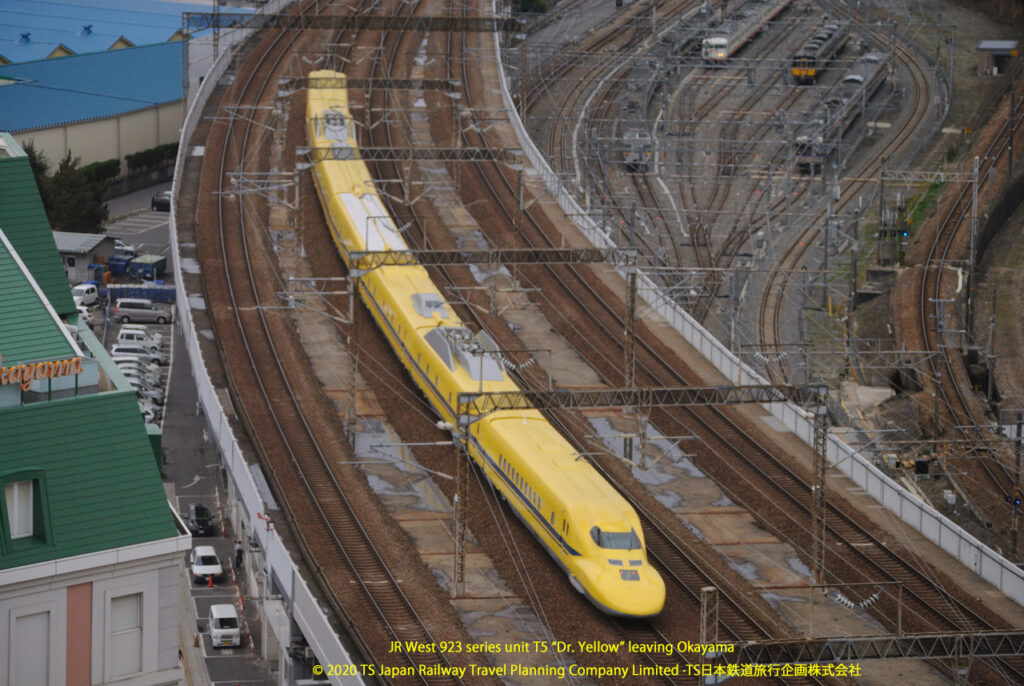
Doctor Yellow
JR Tokai and JR West have announced that their “Doctor Yellow”923 series inspection trains. JR Tokai’s train (T4 introduced in 2000) will be retired in January 2025 whilst JR West’s train (T5 introduced in 2005) will retire in fiscal year 2027 (Apr 2027~Mar 2028).
From 2027 some N700S shinkansen trains will be fitted with monitoring equipment.
N700A/A ->N700S
JR Tokai and JR West will continue to introduce the N700S shinkansen train. They have a long way to go before replacing all the N700A/A trains currently in use. As at the end of 2014 JR Tokai had introduced 46 and JR West 4 sixteen car trains. There are still 125 N700A/A in service.
JR West plans to cascade some of its N700A/A to replace its 500 and 700 series trains. This will mean reducing the trains from 16 cars to 8 cars.
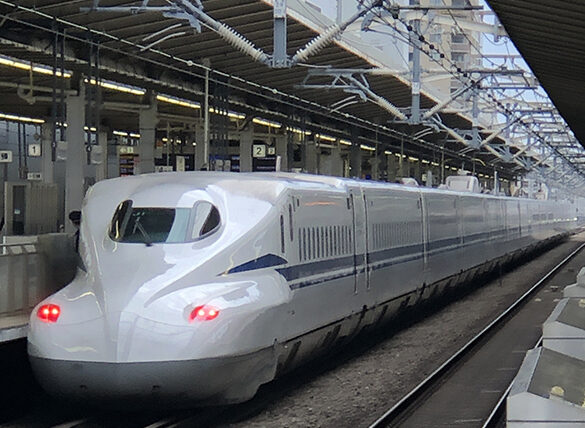

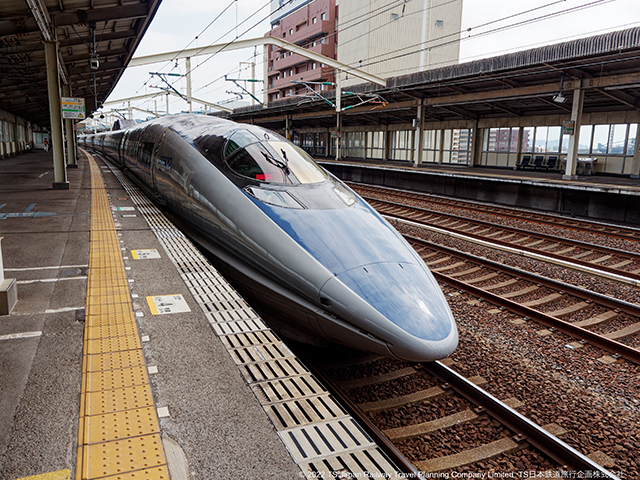
500 series & 700-7000 series
Although no final date has been announced, JR West will be replacing its 500 series (Picture on the right) and 700-7000 “Rail Star” (left) trains, replacing with cascaded N700A/A units. You will however still be seeing both trains in 2025 with replacements likely to start 2026/7.
JR East Tohoku Shinkansen & Yamagata Shinkansen
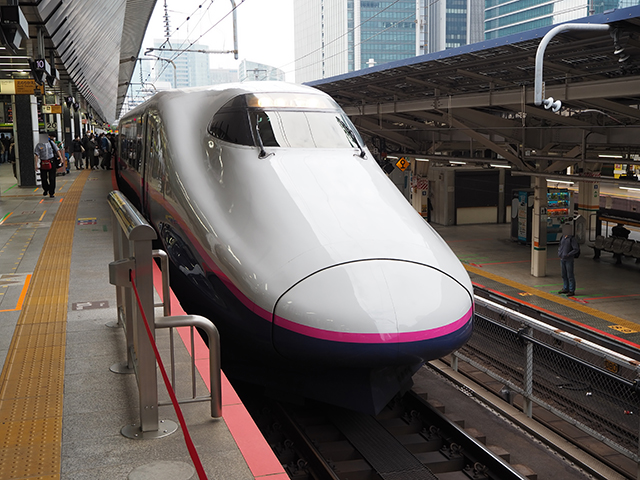
E2 series
Although JR East has been increasing its E5 shinkansen, now with 51 units now in service, the older E2 series shinkansen which is used on some slower Yamabiko and Nasuno services.
The E2 series first entered service in 1997 and now made up of 8 units (as of the end of 2024). It is likely that these trains will continue in service until the next generation shinkansen trains for the Tohoku Shinkansen are introduced as a result of the Alpha-X test train trails.
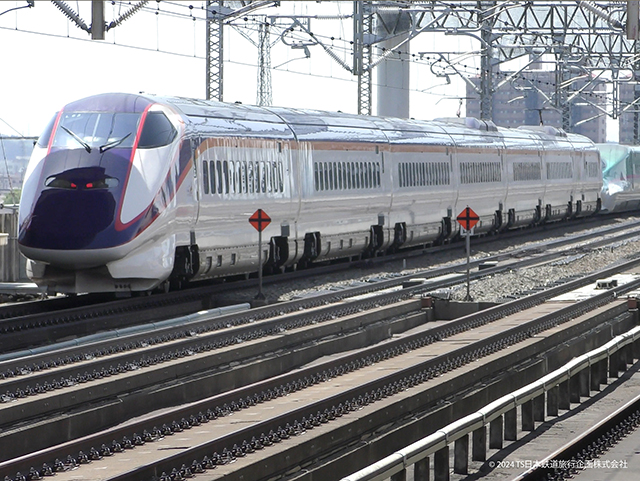
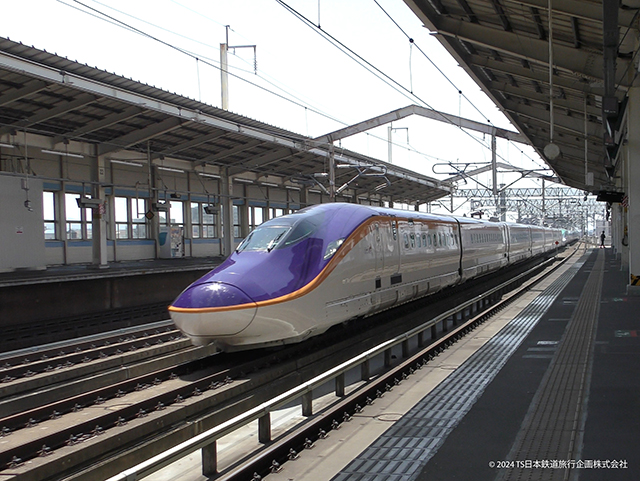
E3->E8
In 2024 JR East introduced into service its E8 (right picture) Yamagata Shinkansen train. This train will replace the E3 Yamagata Shinkansen. It is expected that the E8 series will replace all the E3 (left picture) series trains(*) by 2026.
(*) the shinkansen inspection train E926 is based on the E3 series, which will continue to operate beyond 2026.
Link: Info Page: Shinkansen
Chuo Line (rapid services) double deck green cars finally in service
After much anticipation and delays caused partially by the pandemic finally introduced the double deck green cars in October 2024.
This required most station platforms served by the Chuo Line rapid services to be extended to accommodate 12 rather than 10 car trains.
This now means that JR East is operating its inter urban green cars on the following lines:
- Tokaido Main Line
- Utsunomiya Line (Tohoku Main Line)
- Takasaki Line
- Joban Line (rapid services)
- (Shonan Shinjuku Line / Ueno Tokyo Line)
- Yokosuka line
- Sobu Main line (rapid services)
- Chuo Main Line (rapid services)
Another feature of the Chuo Line green cars is that instead of the single leaf doors used on trains on the other lines, the Chuo Line cars have double leaf doors, which means fewer seats but quicker alighting / disembarking time.
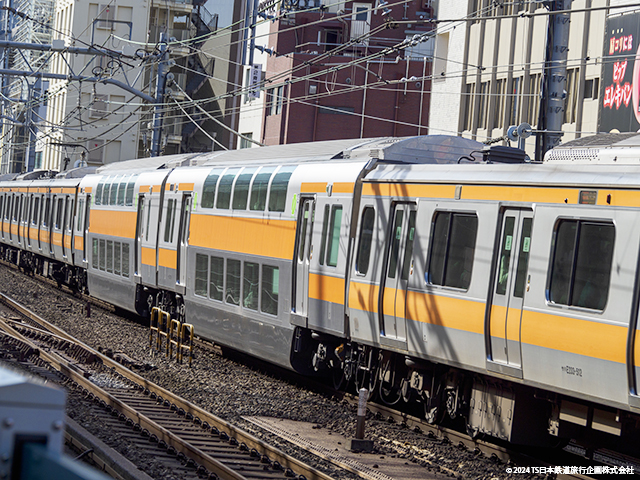
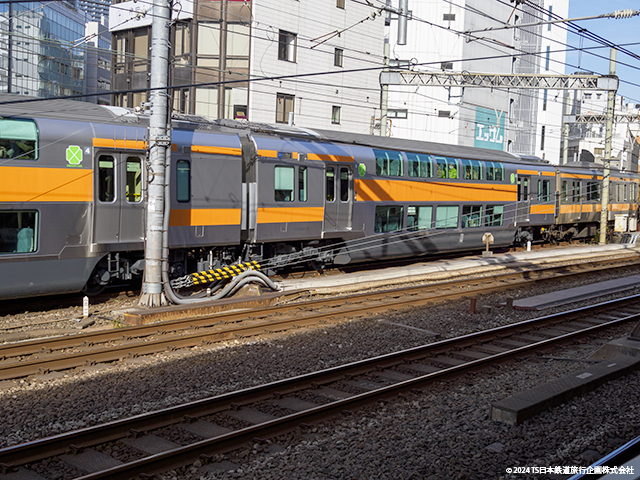
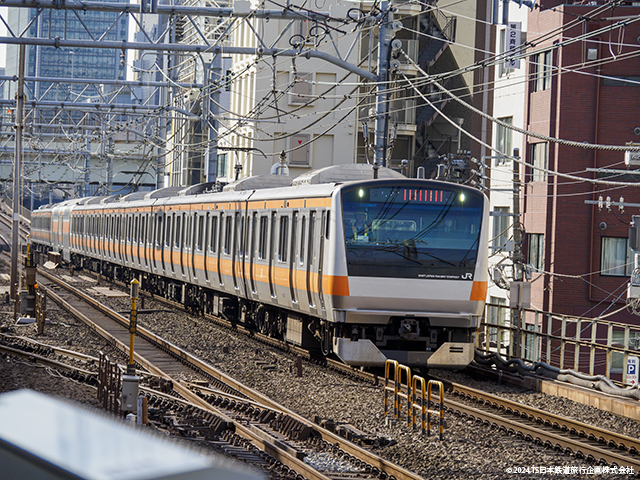
The green cars on JR East’s Greater Tokyo interurban routes are different from those on shinkansen and Limited Express services as although an extra fare is payable seats are not reservable, however they do provide more space and seating configuration is cross seat (reversible but usually facing direction of travel).
The provision of “premium seats” on local routes is becoming more popular in both Kanto and Kansai regions and amongst non JR companies as well (e.g. Tokyu, Tobu, Keihan and Hankyu)
New Trains spotlight
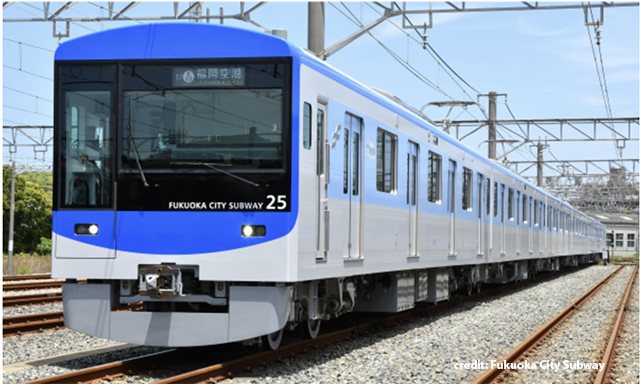
Fukuoka City’s Hakozaki Line and Airport Line are set to get new trains that will provide improvements in passenger comfort and convenience—the new 4000 series.
The 4000 series trains will replace the aging 1000N series, which has been in service for 40 years. The new trains as well as bringing improvements in passenger comfort will also, importantly, improve accessibility, with increased priority seating and designated spaces for wheelchair and baby buggy users, among other enhancements.
Small regional railways, like Iyo Railway (Iyotetsu) in the Matsuyama area of Shikoku, have traditionally depended on second-hand or even third-hand trains from major railway companies such as Keihan, Tokyu, Keio, and Seibu for their rolling stock.
Recently, however, many of these smaller companies have discovered that purchasing new trains is more cost-effective when considering long-term operational expenses. The government has even provided subsidies to assist in modernizing their fleets. These new trains are not only more efficient but also offer improved accessibility.
Iyo Tetsudo has recently received its first 7000 series train, set to replace the older 700 series. The 7000 series is scheduled to begin service in February 2025. (Image: Iyo Tetsudo)
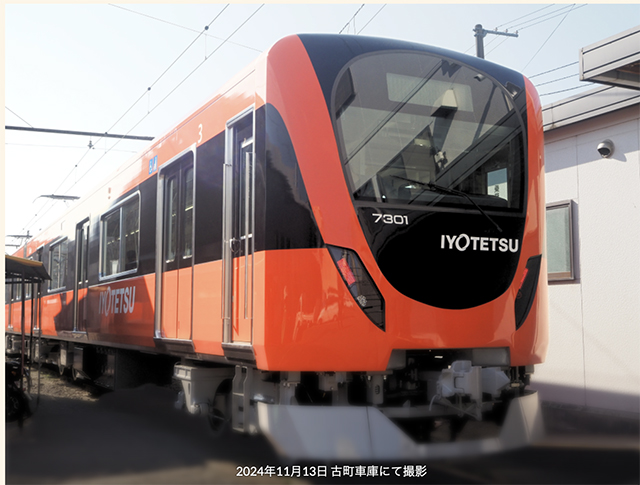
Links: Iyo Railway English Page. Exploring Railways in Shikoku











